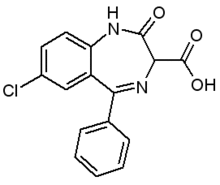Fifteen months after landing $150 million in equity financing, Deerfield-based Ovation Pharmaceuticals Founder and President Jeffrey S. Aronin says the upstart company's prescription for growth is producing good results.
Ovation has acquired five drugs since landing the financing from Chicago-based private equity firm GTCR Golder Rauner.
Ovation's focus is on niche drugs that are underpromoted by big pharmaceutical companies, Aronin said. Big pharma is more interested in developing and marketing blockbuster medicines that can grow to generate $700 million to $1 billion in annual revenues, he said.
Ovation, which employs roughly 50 people, sets its sights much smaller. The profitable company seeks to acquire and market branded drugs and late-stage products under development that have the potential to grow to $100 million in annual revenues.
"For us if we grow a $50 million drug to $100 million, that's a big success," Aronin said.
"For them [big pharmaceutical companies], they have to focus where they get the best return."
And that creates opportunity for Ovation.
"A lot of products have patient groups that have been neglected and ignored by big pharma," said 35-year-old Aronin, who has industry experience.
He was previously chief executive officer of two venture-backed health-care companies and a sales and marketing executive with American Health Products Corp. Ovation's chairman and chief executive officer, William H. Gantz, was previously president of Deerfield- based Baxter International Inc.
Ovation targets smaller patient populations in markets served by a concentrated group of physicians, such as doctors working in neurology or oncologists who work with cancer patients. A small well- trained sales force can effectively deliver sales and service in such settings, company representatives say.
All five of the drugs in Ovation's current product line have come from North Chicago-based Abbott Laboratories. Ovation's first two acquisitions were of Tranxene, used to treat anxiety, epilepsy and acute alcohol withdrawal; and Desoxyn, used to treat attention deficit disorder and obesity. The drugs, which address central nervous system problems, were acquired last August and generated just under $25 million in sales in seven months, Aronin said.
"We grew the products 35 percent in seven months," said Aronin, whose company contracts out manufacturing operations. "The goal had been to grow 35 percent a year. We're exceeding our plans."
Since the first of the year, Ovation acquired Peganone, used to treat epilepsy; Nembutal, used to treat convulsions and insomnia, and Panhematin, used to treat a rare metabolic illness.
The product line helped generate $15 million in revenues in the first quarter, Aronin said.
Home-care negotiations
More than 20,000 home-care workers employed by the state are free to bargain for wage increases and benefits in the wake of Gov. Blagojevich's signing of legislation last week guaranteeing them collective bargaining rights.
The Service Employees International Union Local 880 lobbied for the legislation, which affects personal assistants working for the state's Department of Human Services. The workers provide in-home care to disabled people.
The workers, paid with federal and state funds, currently earn $7 an hour and receive no benefits through the Medicaid reimbursement program.
Negotiations with the state on a contract covering the workers also began last week. Flora Johnson, who is a member of the union negotiation committee and has worked as personal assistant for three years, said the union is seeking a wage increase, health-care benefits, paid vacations and holiday pay.
Insurance rates still soaring
Employers can expect double-digit increases to the cost of their health plans next year, according to Chicago-based Aon Corp.
The company's Aon Consulting Spring 2003 Health Care Trend survey finds rates will soar 16.4 percent for health maintenance organizations, 16.1 percent for point of service plans, 15.7 percent for preferred provider plans and 17.2 percent for indemnity plans.
The data represents figures from actuaries at more than 20 medical, dental, pharmacy and vision insurers.
The increases are roughly eight times the 2.1 percent annual general inflation rate.
Employers will need to continue to make changes to their health plans to limit their rate of increase, Aon said.
Copyright The Chicago Sun-Times, Inc.
Provided by ProQuest Information and Learning Company. All rights Reserved.



